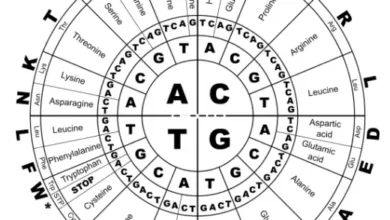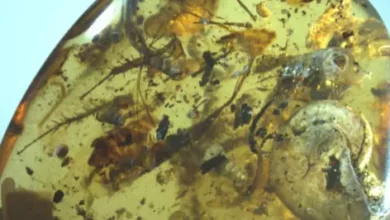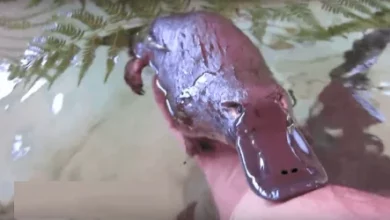The mistletoe, the plant from the Christmas movies and other stories
The mistletoe is a plant that appears in almost all the Christmas films that come from the United States and the United Kingdom, “the kiss under the mistletoe” and that in the Christmas tradition of Spain is not very popular.
But … what is mistletoe, why does it have so much history and is so well known? I am going to try to unravel all those questions that we ask ourselves.
What is mistletoe?
The mistletoe is a plant semiparásita , that is not rooted in the soil but it does on other trees that parasitize. It is semi-parasitic because although it obtains water and nutritional salts from parasitizing other trees, it also performs photosynthesis.
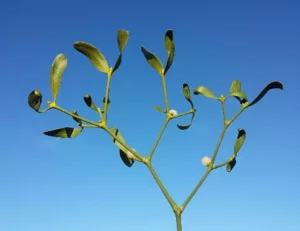
Completely parasitic plants obtain all the nutrients from the parasitized plant and do not photosynthesize, for this reason, they are not usually green.
The scientific name of the most popular and used mistletoe is Viscum album which has 9 subspecies. It belongs to the Santaláceas family, all of them semi-parasitic. The genus Viscum sp. contains mistletoes and marojo.
As we said, it grows on the tops of trees, especially deciduous ones such as apple trees, oaks, … although it can also grow on pines and firs.
Its appearance is of a green plant with a base from which several branches of dichotomous stems, divided by knots and cylindrical, arise . Its leaves are lanceolate with a leathery texture and a greenish-yellow color because they photosynthesize but it is not their main source of nutrients. The leaves can be up to 8 cm long and are arranged in opposite pairs.
The greenish-yellow flowers are very small, barely 3 mm in diameter. They are dioecious, that is, there are female and male flowers.
Its fruit is an inedible berry that when ripe is white or yellow, depending on the subspecies. Not to be confused with holly, another typical red berry Christmas plant.
The dispersion of the seed is carried out by zoocoria , through birds. The fruit has a sticky substance, the league, that sticks to the birds when they rub against them. In this way, the seed is transported by the birds to other trees on which they deposit them when rubbed and where they are fixed by the sticky liquid. When the seeds germinate, they develop roots that can enter the xylem and phloem vessels of parasitized trees, and from there they grow.
The mistletoe is native to Europe and Asia, its presence in North America is as an introduced species and the native Phoradendron leucarpum is usually used, which is very similar and also belongs to the Santataceae family.
Mistletoe properties
The fruits of the mistletoe is toxic at high concentrations as viscumin, a toxic lectin is found in fruit. This protein is cytotoxic as it inactivates the 60S subunit of ribosomes, which causes protein synthesis to stop.
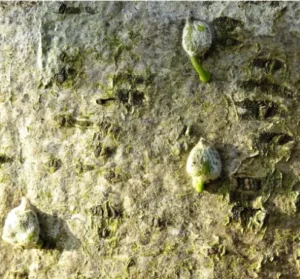
It binds to the galactose residues of cell surface glycoproteins and possibly enters the cell by endocytosis.
Some birds are immune to poison, such as the flat thrush whose favorite food is mistletoe fruits and thus contributes to the dispersal of the plant.
Although in some circles there is a belief that mistletoe may have interesting anticancer properties, although there is some evidence in mice it is very weak and requires further study.
Culture and mythology
The mistletoe is closely associated with the Celtic tradition , Panoramix (the druid of Asterix and Obelix) used it in his magic potion, collecting it dressed in white with a golden sickle and then using it in potions and banquets. It was considered sacred when it was collected from oaks where it is usually rare. This comic book tradition is based on the writings of Pliny the Elder where the Celtic Druids did it as it appears in the Asterix and Obelix comics (except that ritual human sacrifices are ignored in the comics).
The mistletoe was also used as a protective plant and was placed on the cribs of children to prevent the witches from taking them away and in the Asturian tradition in the houses so that they monopolize the bad things that happen inside the house and then burn .
In France, New Years Day is given as a symbol of good luck to wish luck for the remaining 12 months.
The mistletoe has traditionally been associated with fertility, it is thought that it is because it is a plant that remains green in winter while the trees on which it lives have lost their leaves and have a dry and aged appearance.
Why do we kiss under the mistletoe at Christmas?
Like all traditions, the origin is difficult to determine. It seems that it comes from a tradition of ancient Greece where mistletoe was associated with fertility and it was common to kiss under this plant during Saturnalia, which were the Greek holidays that took place from December 17 to 23, around the winter solstice. like christmas. It was also common to do it during weddings.
In Rome, wartime peace agreements were also made under mistletoe and in Victorian England if a young woman of marriageable age refused a kiss under mistletoe she no longer received marriage proposals for the following year, remaining spinster .
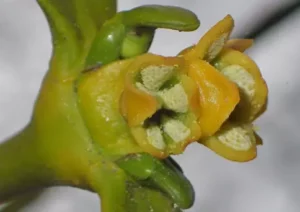
There is an old Scandinavian tale from the thirteenth century that the goddess Frigg made all things animate and inamine swear that they would never harm her son Baldr. The other gods tried to hurt him by all means: stones, arrows, fire … but nothing succeeded. However, Frigg hadn’t taken an oath from the mistletoe who looked too young to attack Baldr. Through the machinations of Loki, Baldr’s brother, the blind god Höðr, made an arrow out of mistletoe and killed him with it. Since then, it is thought that couples began kissing under her as a symbol of making peace.
